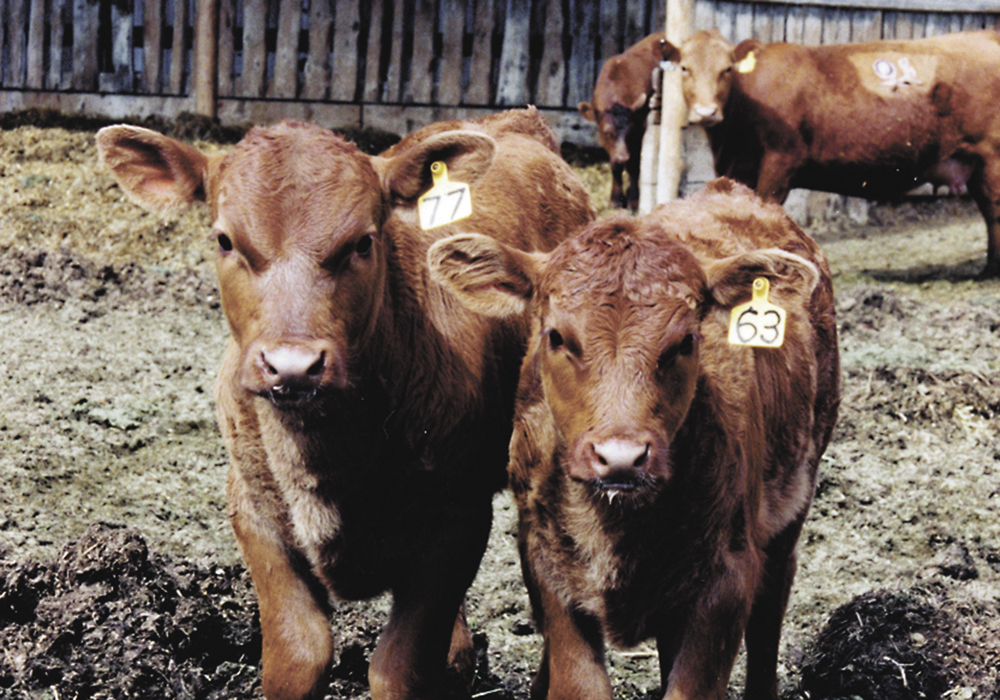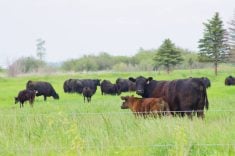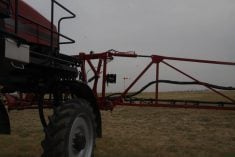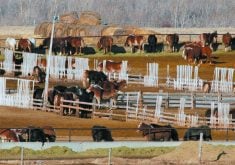When we think of bovine respiratory disease (BRD) in beef cattle we often think of the “shipping fever” pneumonias that occur in weaned calves shortly after arrival in the feedlot.
However, BRD is also the most common cause of death for nursing beef calves older than three weeks and much less is known about the syndrome in this age class.
We expect respiratory disease to be a problem in situations where ventilation might be an issue such as in dairy calves or veal calves, but it does occur in some beef herds even in rather extensive management systems.
Read Also

House ag committee to undertake several studies
The House of Commons standing agriculture committee has set its agenda for the coming months. Members began the fall sitting with a two-hour update on international trade
Outbreaks of respiratory disease in young nursing calves can be hard to investigate and are difficult for beef producers to deal with. These outbreaks are often caused by a combination of various viruses and bacteria and while vaccination of the cow herd is a useful preventive strategy, it may be difficult to provide adequate immunity in this age group of animal.
Calves of that age are difficult to restrain for treatment and are usually on pasture where observation and identification of early cases becomes more difficult.
In many cases, the calves that go on to die may have secondary bacterial infections that may not be related to the primary cause of the respiratory infection, making diagnosis more difficult.
The Agricultural Research Service Meat Animal Research Center tracked the annual incidence of BRD in pre-weaned calves in its research herd. During more than a 20-year period, the annual incidence varied from a low of three percent of calves affected to a high of 24 percent, with an overall annual average of 11 percent. On average, the mortality rate of calves suffering from pre-weaning BRD was 13 percent.
Similarly, a study led by Dr. Jennifer Pearson and Claire Windeyer at the University of Calgary demonstrated an average incidence of treatment for BRD in pre-weaned calves of 3.8 percent in western Canadian herds.
In a recent study of antimicrobial use in western Canadian cow-calf herds by Dr. Cheryl Waldner and colleagues at the University of Saskatchewan, the most common reason for treating calves with antimicrobials between birth and weaning was respiratory disease.
In that study 77 percent of herds surveyed treated at least one calf prior to weaning for respiratory disease. Florfenicol was the most common antimicrobial used for treatment of the calves for BRD.
In another United states study led by Dr. Amelia Woolums, about one out of every five herds reported having some calves with respiratory disease before weaning and almost half of these herds with pre-weaning BRD cases reported having at least one calf die from BRD pre-weaning.
The most common age group reported as having BRD were calves between one to four months of age. Larger herds were more likely to have calves affected with pre-weaning BRD.
The occurrence of diarrhea in the calves and respiratory disease in adult cows was also associated with the occurrence of pre-weaning BRD.
The occurrence of diarrhea in calves may be related to a lack of colostrum intake, which is a predisposing factor to many infectious diseases in calves including pneumonia and diarrhea.
Diarrhea has also been shown to be associated with the development of respiratory disease in dairy calves. Control of diarrhea in beef herds by ensuring adequate colostral intake and through environmental management may also help to control pre-weaning pneumonia.
When Woolum’s research team examined the incidence of pre-weaning BRD in these herds they were able to identify a number of other risk factors including introducing calves from outside sources, feeding of creep feed to nursing calves, and the use of estrous cycle synchronization programs for cows or replacement heifers.
Introducing calves from outside sources is an obvious bio-security risk as we may be introducing calves carrying a variety of respiratory disease pathogens into the herd. Bringing young calves into the herd also brings the risk of introducing bovine virus diarrhea virus (BVDV) into the herd.
Bovine virus diarrhea virus can infect other calves and cause severe immune system suppression, making calves more likely to contract pneumonia or other infectious diseases. A number of the outbreaks of pre-weaning BRD that I have investigated have been related to the introduction of purchased calves that were infected with BVD virus.
Why would feeding creep feed or the use of estrous synchronization programs be a potential risk factor for bovine respiratory disease in pre-weaned calves?
Both procedures may bring more increased contact between calves in the creep feeding area or during confinement while management procedures are carried out for estrous synchronization.
In today’s parlance, we could talk about a lack of social distancing. Herds that use these management procedures may increase the opportunities for disease transmission between calves or from cows to calves. It was emphasized that both creep feeding and estrous synchronization programs are useful management tools and that modifications of calf-handling practices or increasing the strength of immunity of calves through appropriate vaccination programs might help to lower the incidence of disease in herds that use these management procedures.
You may also want to try to make sure calves stay reasonably “socially distanced” and spread out if you use these management procedures in your herd.
The results of these research studies demonstrate that pre-weaning respiratory disease of beef calves is not an uncommon problem.
Some simple biosecurity practices such as not introducing calves from other sources into the herd at this time may help to prevent some of these outbreaks from occurring.
If you use management procedures that involve concentrating or grouping calves together at multiple times such as creep feeding or estrous synchronization, you should attempt to minimize the confinement of the calves and ensure that the calves’ immunity is maximized through adequate colostral intake and appropriate vaccinations.

















